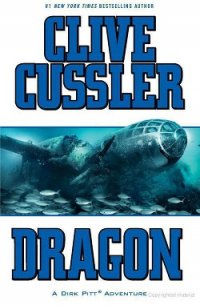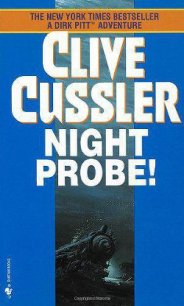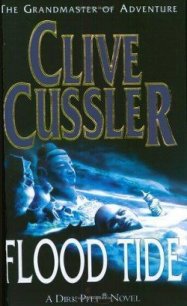Black Wind - Cussler Clive (книги полностью бесплатно txt) 📗
“The aerosol device ... it was verified as operational?” Kang asked. “Yes. As you know, we made a number of modifications from the small-scale model that was tested in the Aleutian Islands. There is no longer a dual agent capability, as the deployment of the cyanide mixture was eliminated from the mission. Plus, the system was redesigned with removable canisters that will allow us to arm the payload with the bio agent just hours before launch. And, of course, it is a much higher volume system. The Aleutian test model, you may recall, carried less than five kilograms of biochemical compound, while the satellite vehicle will deploy 325 kilograms of the chimera agent after hydrogenation Before the satellite was encapsulated at the Sea Launch facility, we conducted a final late-night test under secure conditions. The test results were flawless. We are confident the aerosol system will operate as designed over the target.”
“I do not expect any failures from our equipment,” Kang stated. “The launch operation will be the most critical phase of the mission,” the raspy-voiced engineer continued. “Lee-Wook, have we obtained the necessary command and control data to proceed with an independent launch?”
The second engineer, a younger, greasy-haired man with a broad nose, was clearly intimidated by Kang's presence.
“There are two primary components to the launch process,” Lee-Wook replied, stuttering slightly. “The first is positioning and stabilizing the floating launch platform, then erecting, fueling, and preparing the rocket for launch. We have obtained the Sea Launch operating procedures for these steps,” he said, neglecting to mention the cash bribes involved, “which our team has reviewed and practiced thoroughly. In addition, we have obtained the services of two Ukrainian launch specialists formerly employed by Yuzhnoye, the manufacturer of the Zenit rocket. They are assisting with trajectory and fueling computations and will be on hand to assist with the mechanical preparations.”
“Yes, I am aware of the enticements required to obtain them,” Kang replied with distaste. “I believe the Russians could teach the West a thing or two about capitalistic extortion.”
Lee-Wook ignored the comment and continued speaking, his stutter finally under control. “The second critical component is the actual launch initiation and flight control. During a normal launch at sea, the Sea Launch assembly and command ship performs these controls. For our launch, this duty will be handled by the Baekje. We have refitted the ship with the necessary communications equipment and computer hardware required to execute the launch and flight control,” Lee-Wook said, his voice almost at a whisper. “Our last input has been the software that monitors, tracks, and commands the launch vehicle. The actual launch from the floating platform is a highly automated process, so the software plays a critical role. There are several million lines of software code that support the launch, telemetry, and tracking phases.”
“Have we re-created the necessary software for our mission?”
“It would have required many months to write and test the software on our own. We were fortunate in that all of these software programs are contained within the databases of the assembly and command ship. As the payload customer, our team has had almost unlimited access to the ship for the last three weeks while the Koreasat 2 satellite was being integrated with the launch vehicle. Once on board, our systems team found it relatively easy to breach the vessel's mainframe computers and acquire the software code. Under the nose of their computer experts, we downloaded copies of the software and, over a four-day period, transmitted the code by satellite link direct from the Sea Launch vessel to our laboratory at Inchon.”
“But I was told the Baekje, or Koguryo as she is now called, left port a day ago.”
“We have already transferred a portion of the program to the ship-board computers and will download the remaining software while the ” ship is in transit via satellite."
“And you have determined the optimal flight path to achieve maximum dispersal of the agent?” Kang asked.
“We can theoretically launch up range of the target as far as four thousand kilometers away; however, the probability of accurately striking the target is quite small. There is no guidance system for the sub-orbital payload, so we are relying on wind, thrust, and launch positioning to reach the strike zone. Utilizing normal Pacific wind conditions, our Ukrainian engineers have determined that positioning the launch platform approximately four hundred kilometers up range of the target will maximize the accuracy of delivery. Adjusting for atmospheric conditions at the time of launch, we can expect the pay-load to fall to earth within a five-kilometer radius.”
“But the aerosol system will be activated well before that,” the first engineer injected.
“Correct. At an elevation of six thousand meters, the aerosol, or payload system, will be activated. This will occur shortly after the nose cone fairing has been discarded during flight. In its descent, the pay-load system will be traveling nearly eight kilometers downrange for every one kilometer of descent. A vapor trail of the armed agent will thus be dispersed along a forty-eight-kilometer-long corridor.”
“I would have preferred that the launch not take place so close to the North American mainland,” Kang said with a wrinkled brow, “but if the accuracy of the mission dictates such then so be it. The flight trajectory will be controlled by the rocket burn?”
“Precisely. The Zenit-3SL is a three-stage rocket designed for pushing heavy payloads into high orbit. But our desired maximum altitude is less than fifty kilometers, so we will not fuel the second and third stages and will short-fuel the first stage. We can terminate the burn at any time, which we will program to do at slightly over a minute into the flight. As the launch vehicle coasts in flight to the east, we'll initiate separation of the payload section from the rocket boosters, then release the payload housing. The mock satellite will deploy the aerosol system automatically and disperse the agent until impact.”
“Are we positive the American missile defense systems pose no risk?”
“The American antiballistic system is still in its infancy. It is geared toward intercontinental ballistic missiles that are launched from thousands of miles away. They will have no time to react. Even if they did, their intercept missiles would arrive after we have initiated separation. They might harmlessly destroy the rocket boosters at best. No, sir, there will be no stopping the payload deployment once we have launched.”
“I am expecting the countdown to occur while the G8 leaders are in the target area,” Kang stated bluntly.
“Weather permitting, we have scheduled the launch to coincide with the pre-summit assembly in Los Angeles,” the engineer said nervously.
“I understand that you will see things through from Inchon?”
“The telecommunications lab is in constant communications with the Koguryo and will be monitoring the launch live. We of course will be advising the shipboard crew during the countdown preparations. I trust that you will be able to join us in viewing the launch?”
Kang nodded. “As my schedule permits. You have done exceptional work. Bring the mission to success and you will bring high honor to the Central People's Committee.”
Kang nodded again, indicating that the briefing was over. The two engineers glanced at each other, then bowed to Kang and quietly shuffled out of the study. Tongju rose from his seat and stepped to the front of the large mahogany desk.
“Your assault team is in place?” Kang asked his quiet enforcer.
"Yes, they remained aboard ship in Inchon. With your indulgence,
I have arranged for a company jet to fly me to an abandoned Japanese airstrip in the Ogasawara Islands, where I will rejoin the vessel for the operation."




